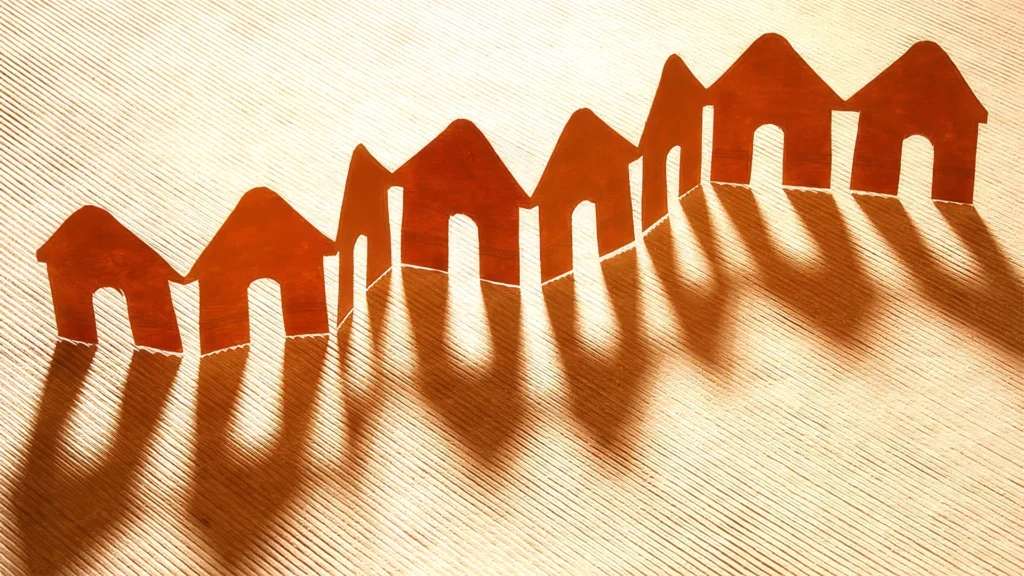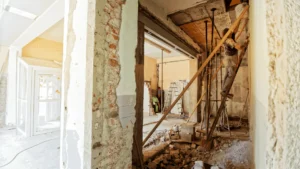If you’re buying or selling a home, you’ve likely heard the term “property chain.” But what exactly does it mean, and how does it affect your transaction? Property chains play a significant role in real estate, especially in the UK, where most transactions are linked in a sequence. Understanding the ins and outs of property chains can help you navigate the home-buying process more smoothly.
In this blog, we explore what is a property chain, how they work and different strategies to navigate them effectively.
What is a Property Chain?
A property chain is a sequence of dependent property transactions linked together. In simpler terms, each transaction in a property chain relies on the next one happening as planned. For example, if you’re selling your home and buying a new one, you need to find a buyer for your current property and complete the sale before you can purchase your next home.
If any link in this chain breaks—such as a buyer pulling out or a sale falling through—the entire chain can be delayed or even collapse. Property chains are common because most people need to sell their current home to finance the purchase of a new one.
Understanding Property Chains and their Importance
Property chains are at the heart of the UK housing market, connecting various transactions that depend on one another. When multiple transactions are interlinked, each one affects the timeline and success of the others. For example, if you’re waiting on a buyer to purchase your current property, that buyer may also be waiting on the sale of their own property, forming a chain of linked transactions.
Property chains can be complex and lengthy, and they can lead to unforeseen delays. But knowing how they work and what factors affect them can help you manage expectations, plan more effectively, and make the process smoother.
How Do Property Chains Work?
To understand how property chains operate, let’s look at a typical chain scenario:
- First-Time Buyer: Often, the start of a property chain is a first-time buyer who doesn’t need to sell a home to finance their purchase. Since they’re buying without selling, they’re often seen as an ideal first link in the chain, helping create momentum.
- Seller Buying a New Home: Once the first-time buyer completes their purchase, the seller of that home can proceed with buying their next property. However, this seller may be part of another chain and may also need to wait on their buyer’s sale to complete.
- Repeat This Pattern: Each seller in the chain relies on their own buyer’s transaction to complete before they can finalize their purchase, creating a series of interdependent transactions.
- Final Link: The end of a property chain is often a seller who doesn’t need to purchase a new property—maybe they’re downsizing, moving into a rental, or relocating. This seller is often “chain-free” and completes the final link in the chain.
When each party in a chain has a committed buyer, transactions progress smoothly. But if one party pulls out or faces a delay, it can disrupt the entire chain, resulting in delays for everyone involved.
Key Terminology Explained
Understanding these common terms will help you navigate property chains with greater confidence:
- Chain Free: A chain-free property is one where the seller doesn’t need to buy another property after completing the sale. Chain-free properties can be attractive to buyers, as they’re often more straightforward to purchase, with fewer dependencies and a reduced risk of delays.
- Onward Chain: An onward chain refers to a situation where the seller of a property is also purchasing another home. This creates additional dependencies, as the sale must align with the timing of both transactions. Onward chains often introduce a degree of risk, as any delays in the onward purchase can delay the sale.
- No Onward Chain: If you see “no onward chain” on a property listing, it means the seller won’t be purchasing a new property after the sale. With fewer moving parts, a property with no onward chain can offer a smoother buying experience, benefiting both buyers and sellers.
The Dynamics of Property Chains
Property chains are dynamic, and various factors can affect their stability. Here are some of the key aspects to consider:
Factors That Can Affect the Stability of a Property Chain
Several factors can impact the stability and progress of a property chain, such as:
- Financing Issues: If any buyer in the chain has trouble securing a mortgage or financing, it can delay or derail the whole chain. Lenders may require additional checks, or financing approvals may fall through at the last minute.
- Survey and Valuation Problems: Surveys might reveal structural or other issues that lower a property’s valuation. This can cause buyers to renegotiate or even back out, creating disruptions in the chain.
- Legal Complications: Property chains often involve extensive legal work, such as title checks, boundary issues, and covenants. Any complication in these areas can cause delays.
- Changing Circumstances: Life events like job changes, family circumstances, or unexpected financial strain may cause individuals in the chain to alter their plans.
- Gazumping and Gazundering: Gazumping, where a seller accepts a higher offer after agreeing to a sale, and gazundering, where a buyer reduces their offer last minute, can cause trust issues and potentially break the chain.
- No Onward Chain: A property that has “no onward chain” can make things easier for other buyers, but if multiple buyers in the chain have onward purchases, the risk of disruption increases.
Understanding these potential pitfalls can help buyers and sellers be better prepared and responsive to challenges that arise.
Strategies for Navigating Property Chains Effectively
While property chains can feel like a balancing act, several strategies can help maintain stability and improve your chances of a successful transaction:
- Choose a “Chain-Free” Property if Possible: Properties that are chain-free reduce risk since the seller isn’t dependent on buying another home. First-time buyers and sellers who are moving into rented accommodation or relocating can help break a chain, reducing complexity.
- Work with Experienced Conveyancers: A skilled conveyancer can pre-emptively identify potential legal issues and manage the process more efficiently. They are also likely to have handled similar chain situations and know how to keep everything on track.
- Maintain Open Communication: Stay in regular contact with your estate agent, solicitor, and even other buyers or sellers in the chain if possible. Open communication helps manage expectations and provides a clearer picture of each party’s status.
- Consider a Cash Buyer: If a property chain feels unstable, selling to a cash buyer, like Zapperty, can offer a fast, hassle-free alternative. Cash buyers don’t rely on mortgage approvals and can often close deals within days, eliminating many common chain issues.
- Have Backup Financing Options: If financing issues are a common risk in chains, having a backup lender or pre-approval from multiple institutions can make your position stronger and ensure the process doesn’t break down due to financing problems.
- Flexibility and Patience: While not always possible, flexibility around moving dates or other terms can make a big difference. Being able to adapt to minor delays without pushing back too hard can keep the chain intact.
Conclusion
With careful preparation and the right strategy, buyers and sellers can navigate property chains more smoothly. Understanding how these chains work, anticipating challenges, and using strategic approaches can help reduce the risks of delays and fall-throughs.
If a chain feels too complex or risky, working with a cash buying company like Zapperty is a chain-free solution for a faster, more reliable sale. With Zapperty, you can sell quickly, with no chains or added complications. Don’t let a broken property chain disrupt your plans. Sell your home fast with Zapperty for a streamlined, chain-free experience.





